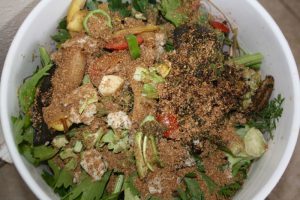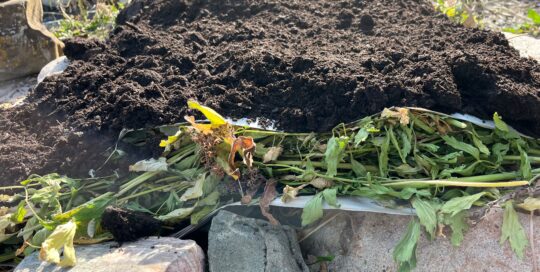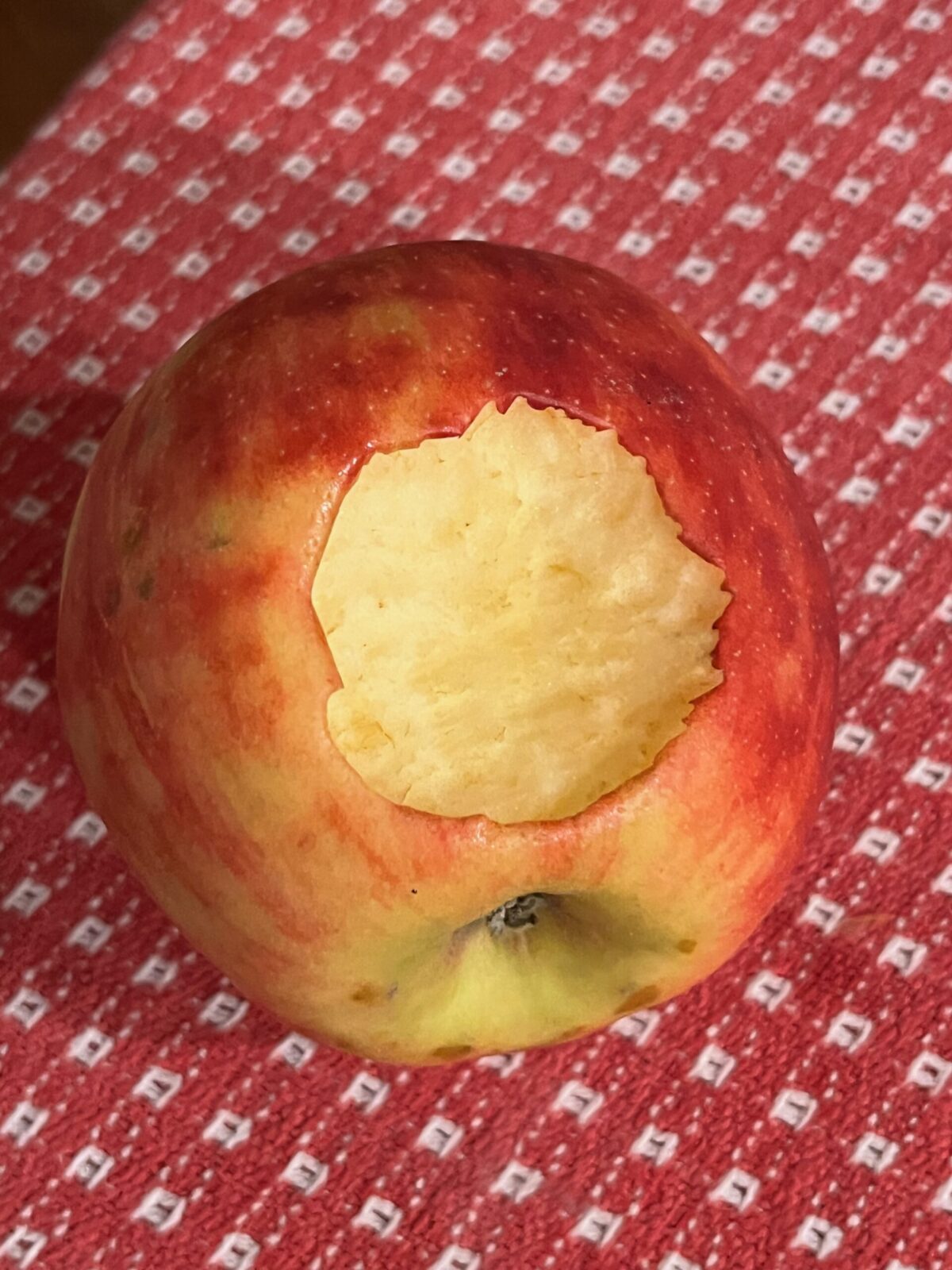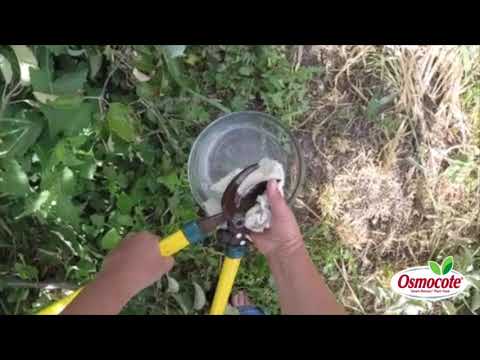Take Care of Kitchen Waste with Bokashi Composting
Views: 4893

How did your compost pile do this year?
I started one surrounded by straw bales this spring in order for a way to deal with the weeds and garden debris I brought home from one of the community gardens. (I tried to burn most of it, but the spring winds put the kibosh on my pyromaniac tendencies.)
The pile didn’t do much, but of course, I didn’t take the proper care of it. I didn’t layer it with green and brown materials, nor did I water or turn it. But, truly, that’s been the story of most of my composting attempts.
What To Do With Kitchen Scraps
For a while I buried my kitchen scraps in the garden. When my little bucket filled, I simply dug a hole and buried it. It worked fairly well, although it’s tough to do in the winter. The ground tends to freeze for a very long time around here.
Next came the chickens as my little trash disposals. They are fantastic. We only had 6, but they took care of anything I threw into their coop, whether it was vegetable or animal scraps. Seriously, they will eat just about anything. When we went fishing, the bones and skin went in with them. Oh boy, did they like that! In reality, it was a little disturbing to think of what they would eat. I know the chickens wouldn’t blink their beady little eyes at gobbling up a fellow fowl, but I thought it was too morbid to feed them chicken or turkey.
But we gave our chickens to a guy last week. We had a mixed flock of old (think chickens using walkers) hens with a couple of new ones. I wanted to start anew. They were still laying, although not consistently (particularly since I didn’t turn the light on them this month), so it was good they found a new home.
Bokashi Bucket Compost Pile
The drawback will be not having the little food processors, and I can’t bear the thought of throwing out perfectly good kitchen scraps. So I’m using the Bokashi bucket composting method.
Bokashi is the name for a Japanese process that ferments organic matter. It’s been used to clean up water pollution because the microorganisms eat up the nasty sludge, and more recently it’s taken off in the United States as a way to turn kitchen waste into gold for the garden.
The Bokashi itself is typically a wheat bran base inoculated with the EM-1 (Essential Microoganisms) and “fed” with molasses. You sprinkle this on top of food waste in a bucket. Once the bucket is full, you put a tight lid on it, and in two weeks you have fermented food that is ready for the garden or in compost pile if you have one.
The big difference with Bokashi is even though it’s called compost, it’s not going to look like the compost we think of when we successfully have a pile. The food won’t look much different than when you put it in the bucket. But, rest assured, once you had carbon matter to the mix (such as soil or leaves), it’ll really kick in and break down. Within 4 weeks of burying it in the ground, it’ll decompose.
Bokashi is a good way to deal with organic waste, and makes a great boost for your garden.
Meet Amy Grisak
Amy is a freelance author and photographer in Great Falls, MT who specializes in gardening, foods, and sustainable agriculture. She provides information on every kind…
Amy's Recent Posts

What Garden Debris Can You Compost?








